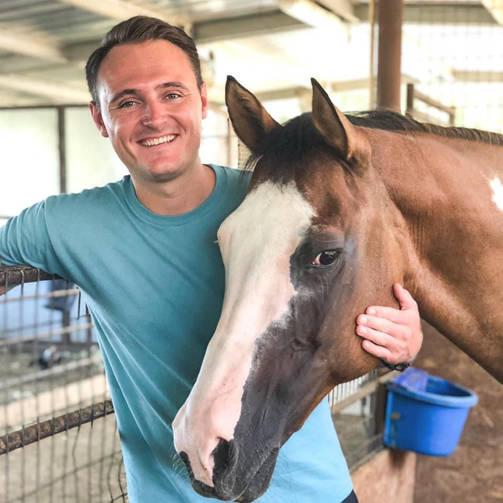
A Veterinary-Farrier Relationship
WHEN WE THINK OF a horse and rider working together to reach a collective goal, how often do we also think of the grooms, farriers, veterinarians, nutritionists, and others who often play an integral role in the development of that team? The collaboration of each of these professions, and how well they transition from one to the other quite often determines the success of the horse and rider. As a veterinarian, I look out for the welfare and health of the horse, but the frequency with which I see some horses only once or twice per year. When a problem or concern is expressed by the owner or trainer pertaining to the horse’s feet, having a constant dialogue and knowledge of what the farrier has been or is currently dealing with is paramount. In the area where I practice there are many farriers, and although I work with a handful frequently, I am constantly meeting and working with new ones.
Often the reason for our discourse is due to a problem or a perceived ‘problem’ by the owner/trainer/rider. My goal is to determine what and where the problem is located, and establish as definitive a diagnosis as possible for that situation. I recently saw a middle-aged appendix Quarter Horse gelding that shows English. The owner didn’t think that the horse was moving as well as he had in the past and wanted the horse examined. It should also be noted that the farrier had asked for lateral and DP radiographs of this horse’s A Veterinary-Farrier Relationship BUILDING PARTNERSHIPS hooves prior to the owner expressing concern. The horse appeared to have ‘high-low’ front feet with the RF being the lower hoof, and I was suspicious of a slight convex dorsal hoof angle of both hind feet.
The horse had its hocks and front coffin joints injected with minimal response, approximately thirty days prior to my examination. On motion assessment, on a hard cement straight line, there was an intermittent RF limb lameness. When lunged on soft dirt footing left, an intermittent LF lameness of Grade1/5 on the AAEP scale was noted, and a Grade 1/5 RF lameness when lunged right. Both front feet were hoof tester negative. Diagnostic analgesia was performed, and significant improvement was noted with a palmar digital nerve block in both front feet. The horse naturally started moving more forward.
His expression in his head was relaxed, he reached down with his head and neck on the lunge line and started bending around the circle through his thorax and haunches more evenly. Lateral and dorsal-palmar/plantar radiographs were taken of both front and hind feet. The right hoof had a neutral palmar angle of the coffin bone and showed signs of previous or ongoing coffin joint inflammation with bone remodeling to the second phalanx. The left hoof had a two-to-three-degree positive palmar angle of the coffin bone and also had signs of coffin joint inflammation with bone remodeling to the second phalanx. Both hind feet had a one-degree negative plantar angle and no other significant abnormalities noted. The positioning of the coffin bone in all four feet when standing was well trimmed medially and laterally.
The radiographs were sent to the farrier and we discussed the examination and radiographic findings over the phone. The farrier, whom I had never met or worked with previously, shared some great insights. Not only had he been concerned about the hind feet of this horse in the past several trims, but he specifically had wanted to know about the right front as he had noted changes to the hoof capsule over time. His instincts and knowledge of seeing this horse cyclically, and observing that changes were starting to occur, led him to
Having a constant dialogue and knowledge of what the farrier has been dealing with is paramount.
notify the owners. This was pivotal in bringing the horse in for a work-up. Many times, farriers and veterinarians communicate with each other because there is significant pathology, lameness, or injury to specific anatomical structures within the hoof capsule or elsewhere. In this case, proactive communication between farrier and veterinarian enabled the farrier to do his job more effectively and hopefully prevent future pathology or injury from occurring

